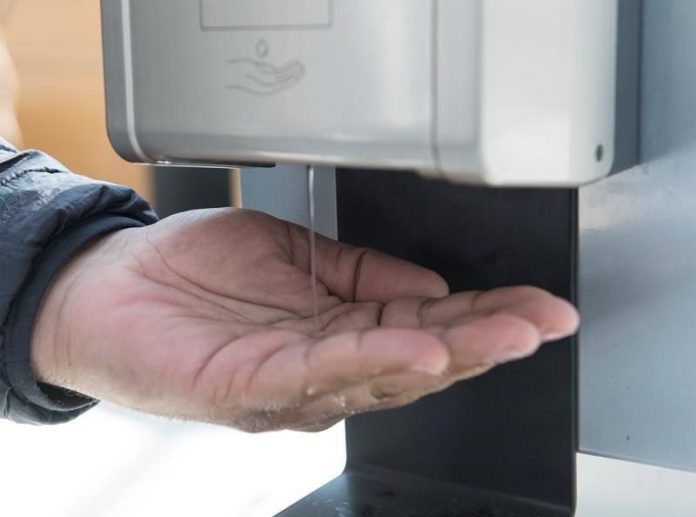
Toronto Public Health unveiled data on Wednesday to shed light on the ethno-racial identity and income of COVID-19 cases in Canada’s most populous city.
“There is growing evidence in North America and beyond that racialized people and people living in lower-income households are more likely to be affected by COVID-19 infection,” said Dr. Eileen de Villa, the medical officer of health for Toronto.
“We believe it is related to poverty and racism.”
The data shows that those who identify as a person of colour represent 83 per cent of the cases, while they make up 52 per cent of the population. The white population makes up 48 per cent of the population, but only 17 per cent of the cases.
Population data is current as of the 2016 Census, while COVID-19 case data was collected between May 20 and July 16 in Toronto.
Of the cases identified between May 20 and July 16, Black people made up 21 per cent of the city’s cases, even though they represent nine per cent of Toronto’s population.
Race data is similar across those who identify as male or female. However, those who are male and identify as South Asian and Indo-Caribbean make up 23 per cent of the cases, even though they make up 13 per cent of the population.
De Villa said that the data also shows that East Asian and white people are under-represented compared to the size of those populations.
Dr. Kwame McKenzie, the CEO of the Wellesley Institute, which is a Toronto-based think tank that aims to improve health equity in the Greater Toronto Area, called the data “very concerning.”
“They seem to confirm our worry that racialized populations and low-income residents of Toronto are doing worse during the pandemic,” said McKenzie.
“The data should lead to urgent action…We clearly need a pandemic response which protects racialized groups and low-income groups, and that means we need to do some things differently.”
In terms of income, 51 per cent of reported cases in Toronto were from people living in low-income households, though only 30 per cent of the city’s population is considered low income. People in households of at least five people make up 27 per cent of cases, while making up only 20 per cent of the population.
Those part of households that make under $30,000 a year make up 14 per cent of Toronto’s population, but they comprise of 27 per cent of the cases. In comparison, those in households with incomes of at least $150,000 make up 21 per cent of the population, but only 6 per cent of the cases.
Those under 30 years old and who make under $30,000, they make up 34 per cent of the cases, even though they represent 14 per cent of that age demographic. Among those 30-59 who make $30,000-$49,999, they comprise of 27 per cent of the cases, but represent 13 per cent of that age demographic.
Of those who are at least 60 years old and make under $30,000 they make up 32 per cent of the cases, and 18 per cent of the age demographic. In a stark comparison, those who make at least $150,000, make up three per cent of the cases, and 17 per cent of the population.
Toronto Public Health said that the reasons for the difference in data are unclear, but according to the City of Toronto they could include:
Existing health disparities linked to social and economic factors
Stress caused by racism and other forms of discrimination
Challenges in participating in the public health response to COVID-19, including
difficulties in limiting COVID-19 exposure because of being an essential worker, and
difficulties in physical distancing because of overcrowding
Inequitable access to health care and social services
“If we want to protect our communities, we need urgently to increase access to affordable, healthy housing. Our racialized populations are much more likely to be overcrowded. Low-income populations are much more likely to be overcrowded,” said McKenzie, noting that overcrowding makes physical distancing difficult.
“Our racialized communities are also more likely to be essential workers. If we want to protect those communities, we need to properly protect essential workers. We need to protect them at work but we also need to protect them when they are home.”
Data will now be shared monthly, and will be used to reduce inequities in how COVID-19 affects various populations in Toronto. The data currently does not consist of those living in long-term care or retirement senior homes, nor those who identify as Indigenous.
Toronto Public Health shared that some limitations of the data is that about 27 per cent of people did not have socio-demographic data collected.
De Villa said targeted testing, an increase in social supports such as voluntary isolation sites, and enhanced communication are short-term options to help those communities that are especially at risk.
“In the longer term, however, if we want to have a true impact, a real impact on improving health … we need to address these health inequities and get to the root cause of what underpins our overall health,” said de Villa.
“We need to focus on the social determinants of health, like affordable housing opportunities, access to employment and income supports and educational opportunities, and yes we need to address systemic racism.”
Coun. Joe Cressy, who is the chair of Toronto’s board of health, said that when he heard the statistics, it felt like “a punch to the gut.”
“Perhaps they shouldn’t surprise us. We know that race and income have long determined health status, but they do represent a call to action,” he said Thursday afternoon.
“COVID by no means created these racial and economic disparities in Toronto — they existed long before — but COVID has certainly exposed and taken advantage of them.”
This is not the first time that Toronto has shed light on the discrepancy in how COVID-19 affects different demographics. Earlier in the pandemic, the province released a neighbourhood breakdown which showed the COVID-19 infection rate among all areas of the city.
As of Wednesday, the City of Toronto has had 15,334 cases of COVID-19, the most of any of Ontario’s public health units. That includes 13,824 people who have recovered, and 1,153 people who have died after contracting the virus.































